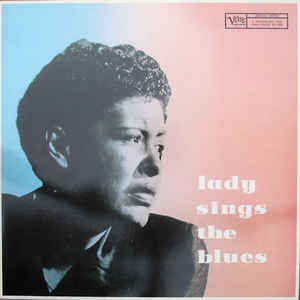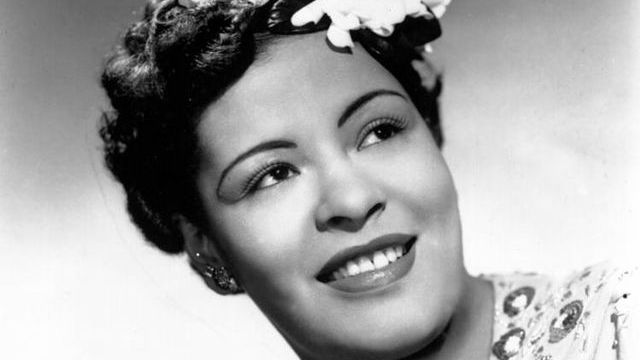Billie Holiday – Lady Sings The Blues
Released: 1956
Label: Clef Records
Here we are with an album I actually own, although my copy is a nice re-issue, with a different cover, that I bought in Portugal while I was on holiday a few years ago. By the time of this release in 1956 Holiday’s voice had noticeably deteriorated from her earlier recordings but it didn’t matter; the imperfections are quite appropriate for the mood of the songs. Holiday’s autobiography was released the same year, with the same title, and the album is a companion for the book, possibly purposely, possibly not.

Holiday and the song ‘Strange Fruit’ will be eternally linked and in her autobiography, she suggested that she, together with her musical collaborators, set the poem to music. The writers David Margolick and Hilton Als dismissed that claim in their work ‘Strange Fruit: The Biography of a Song’, writing that hers was “an account that may set a record for most misinformation per column inch”. When challenged, Holiday—whose autobiography had been ghostwritten by William Dufty—claimed, “I ain’t never read that book.”
TRACKLIST
Lady Sings The Blues
Trav’lin’ Light
I Must Have That Man
Some Other Spring
Strange Fruit
No Good Man
God Bless The Child
Good Morning Heartache
Love Me Or Leave Me
Too Marvelous For Words
Willow Weep For Me
I Thought About You
Billie Holiday Facts:
- Born Eleanora Fagan – Billie Holiday was born on April 7, 1915, in Philadelphia. She later adopted the stage name “Billie” after actress Billie Dove.
- Influenced by Bessie Smith and Louis Armstrong – As a child, she was deeply inspired by blues legend Bessie Smith and jazz great Louis Armstrong, shaping her unique vocal style.
- Struggled with Racism and Discrimination – Despite her success, Billie faced intense racism throughout her career. She was often barred from staying at the hotels where she performed and dealt with segregation in the music industry.
- “Strange Fruit” Controversy – Her 1939 song Strange Fruit, a haunting protest against lynching, was highly controversial. Some clubs refused to let her perform it, and the FBI later targeted her for her activism.
- Targeted by the U.S. Government – The Federal Bureau of Narcotics hounded her for years due to her drug addiction, which was exacerbated by personal struggles and industry pressures.
Lady Sings the Blues (Album) Facts:
- Released in 1956 – The album Lady Sings the Blues was released by Clef Records and coincided with Billie’s autobiography of the same name.
- Features Iconic Songs – The album includes some of Billie’s most famous tracks, like Lady Sings the Blues, God Bless the Child, and Strange Fruit.
- Recorded During a Difficult Time – Billie recorded the album while dealing with personal struggles, including drug addiction and legal issues. Her raw emotion is evident in her vocal performances.
- A Unique Recording Process – Some of the tracks were recorded in 1954, while others were done in 1956, just before the album’s release. Despite the gap, the songs flow seamlessly.
- Her Legacy Lives On – Lady Sings the Blues remains one of Billie Holiday’s defining albums, influencing generations of jazz and blues musicians. The title later inspired the 1972 film starring Diana Ross.


Leave a Reply